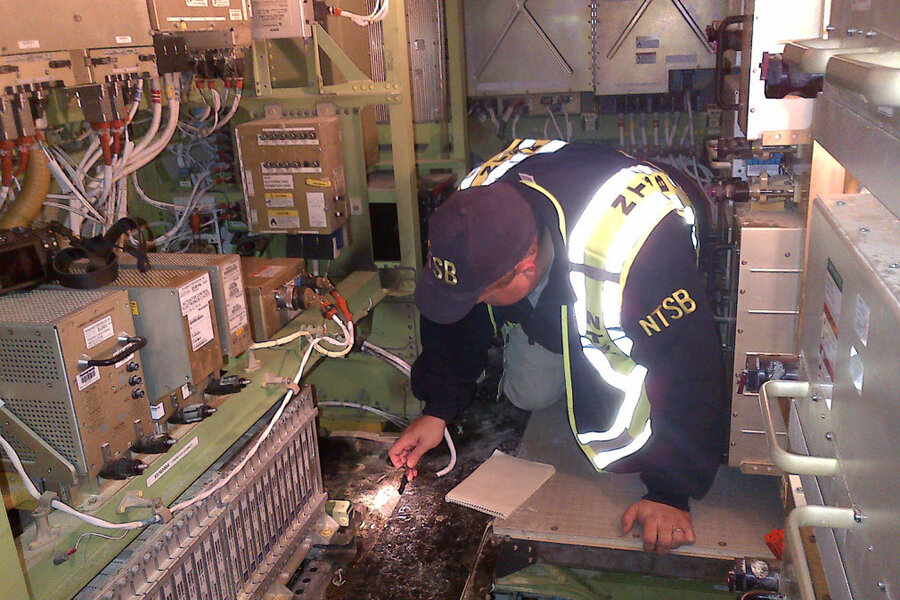Why the Feds opted for a sweeping safety review of Boeing 787
Loading...
A federal safety review of Boeing's 787 jetliner promises to bring added scrutiny to the pioneering but glitch-troubled airplane – including inquiries into its heavy reliance on electrical systems and batteries.
For the flying public, that's probably a good thing.
Both the company and federal officials, as well as many outside aviation experts, say they believe the Boeing 787, dubbed the Dreamliner, is safe to fly. But with multiple and varied problems cropping up, including a recent fire during one plane's at-the-terminal transition between flights, the added layer of oversight may help to ensure that any flaws in design or manufacturing are found and fixed as promptly as possible.
The Federal Aviation Administration (FAA) and US Transportation Secretary Ray LaHood launched the safety review Friday. The move, unusual for its sweeping scope, appears rooted in two facts: the 787's unfortunate series of first-year glitches and, second, the plane's unprecedented reliance on electric controls and batteries to reduce reliance on pneumatic or hydraulic systems. [Editor's note: The original version of this sentence has been revised to give greater specificity about the distinctive features of the Dreamliner that are under review.]
"In light of a series of recent events, the FAA will conduct a comprehensive review of the Boeing 787 critical systems, including the design, manufacture and assembly," the FAA said in announcing the move.
Boeing announced its full cooperation with the review, but also emphasized the Dreamliner's successful safety record during its first year in service. "The airplane has logged 50,000 hours of flight and there are more than 150 flights occurring daily. Its in-service performance is on par with the industry's best-ever introduction into service – the Boeing 777," the company said in a statement.
Boeing said the regulatory certification process for the aircraft had been the "most robust and rigorous" in FAA history. But it acknowledged that "we have experienced in-service issues in recent months and we are never satisfied while there is room for improvement."
The federal agency joined Boeing in avowing that the plane is fit to fly, even as reviews by Boeing and the agency are under way. But FAA Administrator Michael Huerta said Friday that incidents with the plane warranted the unusual stem-to-stern inquiry. "We need to have a complete understanding of what is happening," he said. "We are conducting the review to further ensure that the aircraft meets our high safety standards.”
Boeing stock lost about 2 percent of its value Friday. The company remains a leading player in making commercial jets, and its total orders for new planes last year were the second highest in company history.
The Dreamliner represents Boeing's effort to create a state-of-the-art widebody jet for long-haul flights, crossing oceans with a design that's 20 percent more fuel-efficient than the prior generation of aircraft. It relies heavily on lightweight composite materials rather than aluminum, and on lithium ion batteries to power some of its systems.
Rob Mark, publisher of Jetwhine.com, told the Monitor the 787 "is basically an all-electric airplane."
In addition to the fire on a Japan Airlines jet, which caused smoke to enter the cabin while it was parked at Boston’s Logan Airport, recent incidents with the 787 include a fuel leak, a cracked cockpit window, and a flight that was diverted because of electrical problems.
Boeing chief executive officer Jim McNerney said in a statement released Friday that the company stands "100 percent behind the integrity of the 787 and the rigorous process that led to its successful certification and entry into service." He said he expects the review "will underscore our confidence, and the confidence of our customers and the traveling public," in the plane.






